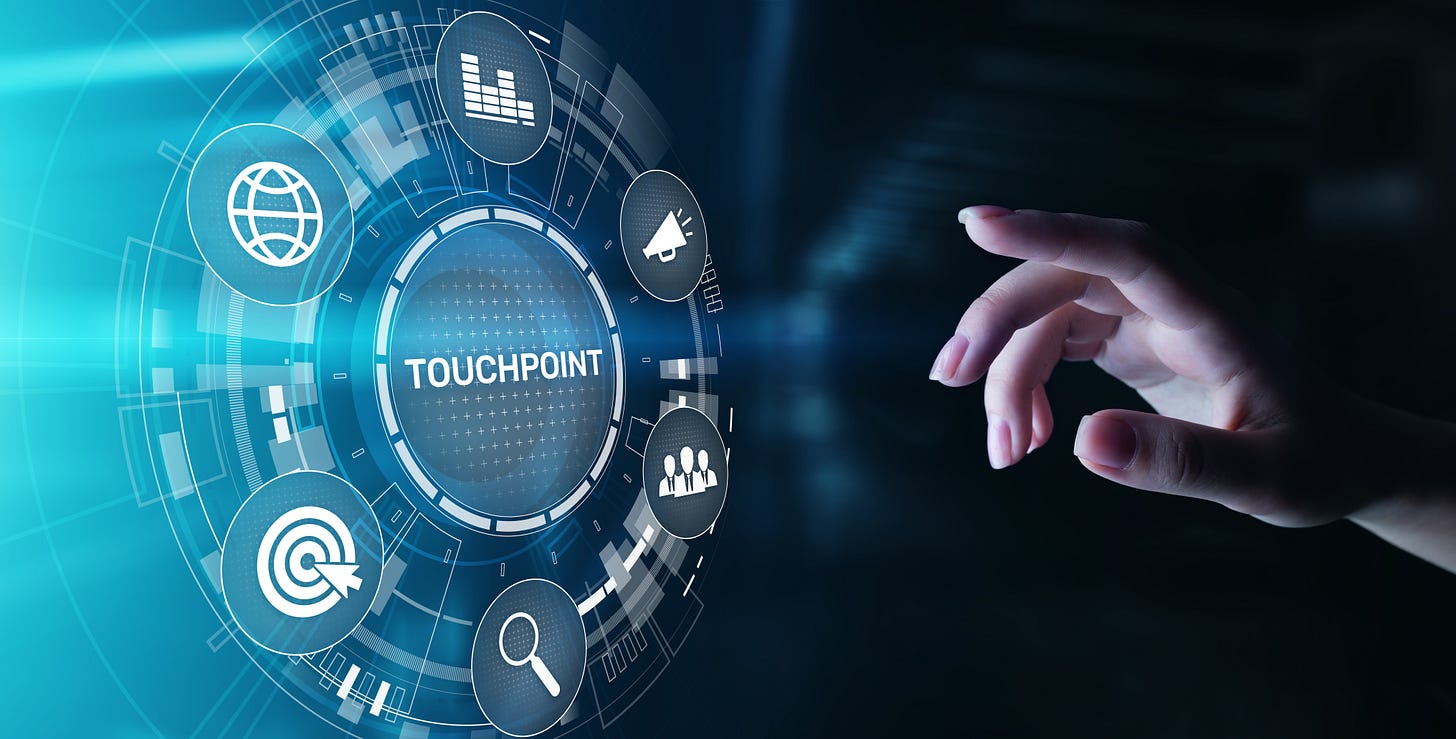Quick Take: Mastering the future of work
Are you tracking the ways your customers want to interact with your business, and are you taking steps to work differently, both physically and virtually?
Digging into the future of work
In previous editions, I offer one-off suggestions for innovating business experiences to align with the future of work, which is often discussed as “how technologies like automation, robotics, and artificial intelligence are shaping how we work, where we work, and the skills we need to work.” With this Quick Take, I start to build a more holistic framework for B2B innovation and the future of work. This is an enormous task, and there are many places to begin, but it seems that the intersection of virtual and real-world experiences is a perfect start. I found excellent insights in a recent article, “How Data Is Humanizing Customer Experiences,” by Rohit Kapoor in the MIT Sloan Management Review.
Kapoor cites many consumer examples, no doubt because digital-first consumer experiences are further along than those of B2B innovators. Below, I share his insights and arguments. Recognizing that consumers are very different than business customers, I suggest three “first principles” for B2B innovation introduced in a recent Deep Dive. Consumer innovations may inspire B2B innovators, but they must not copy them. The most potent business experiences will flow from purpose, commitment, free world values, and first principles!
Kapoor asserts that “data-driven personalization is coming to businesses across all industries” and asks how leaders may avoid commoditization as every company uses the same technologies to create digital-first touchpoints. The answer “comes down to using data and analytics in smart ways—to better anticipate consumer needs and deliver ‘human’ customer experiences at the right time.” For me, that’s doing business as humans for humans in the digital age. Kapoor goes further, asserting that online experiences can do more for customers than offline solutions:
It turns out that the key to humanizing digital interactions is data. By mining every touch point; aggregating structured data from customer profiles along with unstructured data from phone and chat logs, emails, and snail mail; and analyzing larger-scale patterns of customer behavior, it’s possible to create a level of personalization that would have been impossible to achieve in the offline world.
Digging in, Kapoor explores three perspectives, each of which provides a valuable beginning for exploring business experiences and the future of work:
The millisecond economy
Kapoor’s observation that faster decisions fuel the rise of digital-first engagement rings true for business experiences. He explains: “Every aspect of a transaction needs to be executed instantly, determining which special offers will be promoted, making a lending decision, or serving up optimized products.” He is talking about proximity, defined by Robert Wolcott as the use of technology to drive the production and provision of services and products closer to the moment of demand. Business experiences are not just about shortening the time between placing an order and receiving a product. Every touchpoint in a business customer journey, from discovery to deciding to procuring to using to optimizing, is an opportunity for differentiation, with competitive advantage achieved at varying touchpoints by needs that vary by person and purchase occasion. Business personalization is a monumental challenge.
Expanding the ‘Netflix Effect’
Kapoor argues that “speed alone does not build lasting customer relationships” and introduces the Netflix effect as the “ability to recognize a customer’s preferences, automatically pick up where they left off—regardless of location or streaming device—and serve up tailored content.” Many B2B companies think of customer loyalty as a program and measure loyalty as repeat purchases, and that’s wrong. Loyalty is a human value, one that exists between humans. While hyper-personalization in the digital world may create customer satisfaction, B2B companies must align virtual experiences with human execution to achieve the most vital customer relationships and unbreakable customer loyalty.
Differentiating with more meaningful touchpoints
Kapoor asks: “In a world where every company has the same technological capabilities, and every digital interface is starting to look the same, how can brands preserve their unique identities on the internet?” The answer lies in modeling on the value that “knowledgeable advisers and intuitive salespeople” create—but doing so better through the power of AI-enabled predictive intelligence. I agree, but with a caveat. The right frame of mind for business experiences is not virtual or physical, but virtual and physical. Human-centric customer relationships create a kind of equity that carries over into digital experiences. Our mind makes most decisions subconsciously, sorting options against previous experiences processed as stories, which are human at their core. Zoe Chance’s new book on influence shapes my thinking, and I will dig deeper and connect the dots in a future edition.
B2B companies must master the future of work as a North Star for innovation. B2B innovators must not reduce business experiences to transactions executed at touchpoints across a customer’s journey. This frame may be helpful when making plans to delight individuals, but business customer relationships are as much company-to-company as person-to-person. This means that programs and policies that promote collaboration, integration, and optimization are as crucial as data-driven, AI-enabled, digital-first experiences that happen in the blink of an eye. Business customers demand more. And business customers, like all customers, are always right.
Your take?
Are you tracking the future of work trends? Do you know how your customers are changing the way they work? Can you connect your customer’s intentions to your innovations? Can you apply my first principles to identify big ideas for innovating the future of work? I’d love to hear from you. Please share your comments below or reach me at mark.dancer@n4bi.com.





